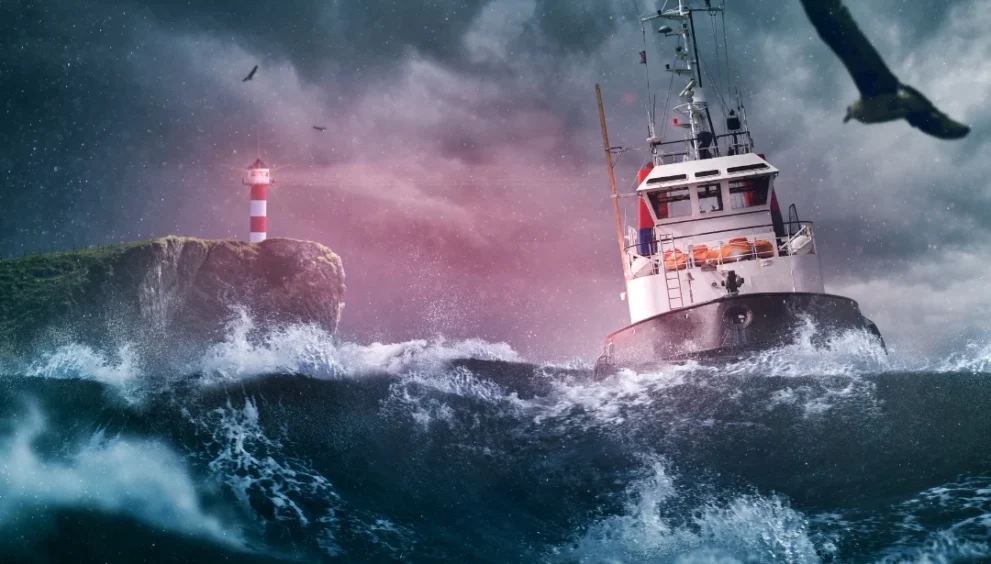IAMSAR The Lifeline of Maritime and Aeronautical Rescue
In the magnitude of the oceans and open skies, trouble does not knock — it crashes in. Whether it’s a vessel in distress or an aircraft gone silent, quick, coordinated rescue efforts are the difference between life and death. That’s where IAMSAR comes in the International Aeronautical and Maritime Search and Rescue Manual. It’s not just a manual — it’s the global game plan for saving lives.
—
What’s IAMSAR?
The IAMSAR Manual is a joint publication by the International Maritime Organization( IMO) and the International Civil Aviation Organization( ICAO). It gives detailed guidance on how to plan, coordinate, and execute search and rescue( SAR) operations for incidents involving vessels and aircraft — both collectively and together.
It’s designed for every person involved in SAR, from seacoast guards and ship captains to aircraft aviators and rescue coordination centers( RCCs). In a nutshell, IAMSAR helps ensure that everyone speaks the same language during chaos — literally and operationally.
—
Why Was IAMSAR Created?
Imagine : this A ship sends a distress signal in the Indian Ocean. A near aircraft picks it up. Local seacoast guards get involved, perhaps indeed another country’s navy pitches in. Without a common standard, coordination would be a agony. IAMSAR solves this by giving invariant procedures that work anywhere on Earth.
—
The Three Volumes One Mission
IAMSAR is n’t just one book — it’s a triad of volumes, each targeting different players in the rescue chain
1. Volume I – Organization and Management
This is for governments and SAR authorities. It covers policies, international coordination, training programs, and setting up SAR services. It answers the big- picture questions like “ Who does what? ” and “ How do we prepare beforehand? ”
2. Volume II – Mission Coordination
This is the playbook for Rescue Coordination Centers( RCCs) and Rescue Sub-Centers( RSCs). It gives step- by- step procedures for planning operations, allocating resources, and handling communication.
3. Volume III – Mobile Facilities
This one is for the vessels, aircraft, and on- scene labor force. It’s literally the go- to in extremities. Volume III is often kept onboard vessels and aircraft to help the crew act briskly and rightly during SAR operations.
—
Levels of SAR Coordination The Backbone of Rescue Ops
While IAMSAR gives us the structure, coordination is the energy that powers the machine. Search and Rescue operations are n’t a one- size- fits- all process. Depending on the inflexibility and scope of the emergency, SAR collaboration happens on different levels — each one designed to escalate support as demanded. Suppose of it like a videotape game the advanced the position, the more violent the charge, and the bigger the backup.
Level 1 On- Scene Coordination
This is where it all begins. Level 1 coordination generally involves the first ship or aircraft to arrive at the scene. The on- scene coordinator( OSC) takes charge of the immediate rescue efforts managing search patterns, survivor pickup, and real- time communication. This level is quick, flexible, and pivotal during those first golden minutes.
Level 2 Local or Regional Rescue Coordination
it escalates to Level 2, If the situation becomes too big for a single unit. Now, local MRCCs( Maritime Rescue Coordination Centers) or ARCCs( Aeronautical RCCs) step in. They use Volume II of the IAMSAR manual to assign further means, cover dispatches, and ensure the safety of rescuers. This is where planning, logistics, and coordination really kick in.
Level 3 International Coordination
At this point, the rescue mission has gone global. Level 3 is actuated for major disasters — suppose missing aircrafts, large passenger ship extremities, or natural disasters. Multiple nations and transnational agencies unite, using predefined SAR zones and covenants to guide efforts. Then, IAMSAR Volume I becomes the playbook for aligning transnational resources and leadership.
Each level of coordination builds on the last, making the system scalable and responsive. Whether it’s a lone seaman in trouble or a major air- sea disaster, the SAR network can adjust, respond, and save lives.
—
Crucial Features of IAMSAR
Common Language : Standard expressions and language exclude misunderstandings.
Search Patterns : It includes detailed charts and approaches like expanding square, sector, and parallel track searches.
Communication Guidelines : From distress frequencies to communication formatting, it covers all you need.
Emergency Equipment : Use EPIRBs, SARTs, and other tools are explained completely.
Survivor Treatment & Prioritization : Post-rescue procedures are just as important as the rescue itself.
—
Conclusion More Than Just a Manual
The IAMSAR manual is more than ink on paper. It’s a global commitment to humanity, a frame erected on transnational trust and cooperation. Every shipmaster, airman, and RCC officer who follows it becomes part of a much bigger picture — a worldwide safety net designed to save lives when things go wrong.
So, next time you’re sailing or flying across vast, lonely spaces, remember this you’re noway truly alone. Behind the scenes, IAMSAR is always ready.


